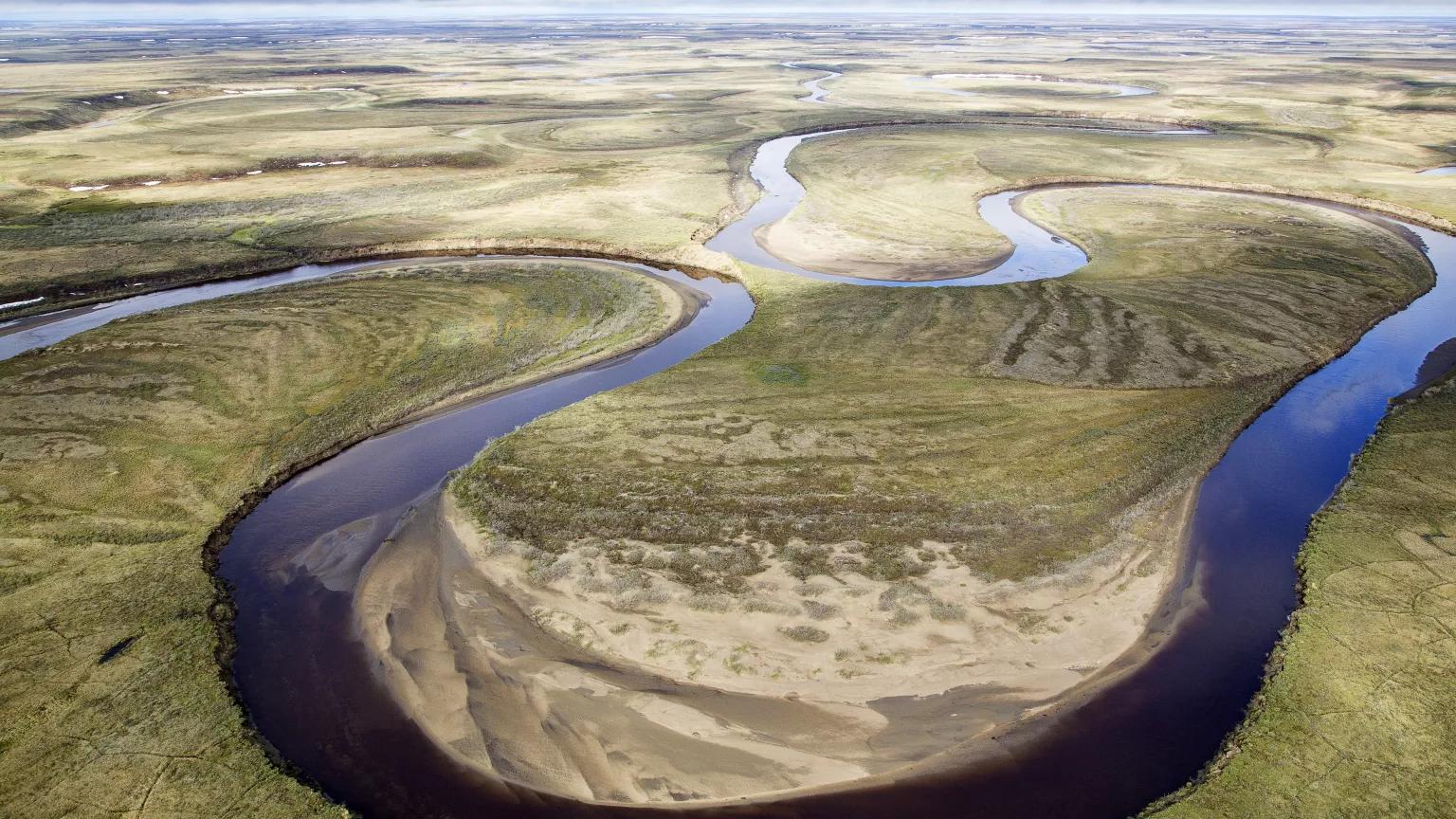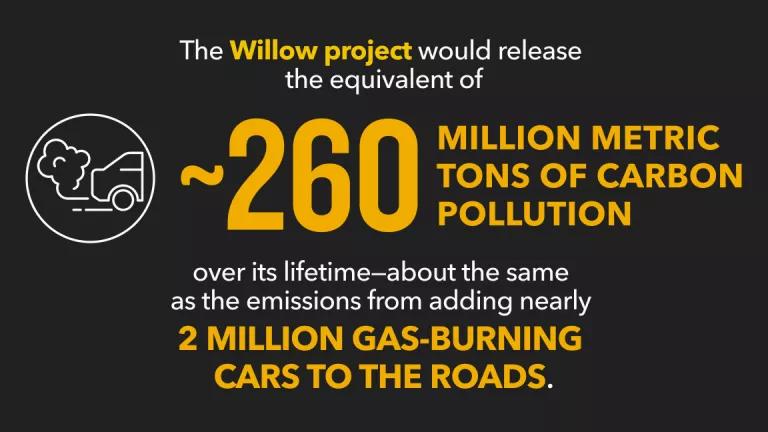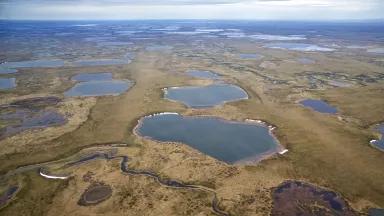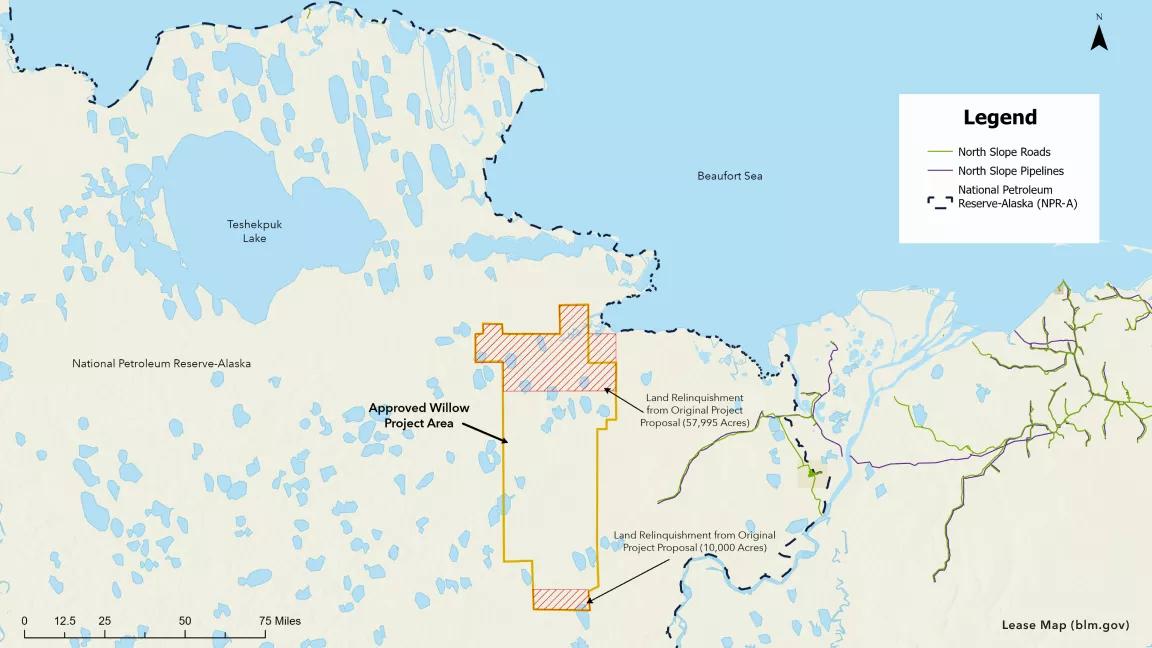Why the Willow Project Is a Bad Idea
The oil drilling proposal would be disastrous for Alaska and the planet (not to mention President Biden’s climate legacy).

A view over the northeast section of the National Petroleum Reserve in Alaska
Bob Wick/Bureau of Land Management
While the Biden administration has passed powerful climate-fighting legislation, it has also consistently made moves to placate the oil and gas industry. Such a strategy is counterproductive, to be sure, but the approval earlier this year of the Willow project—a massive, $8 billion ConocoPhillips oil drilling operation on federally protected land on the North Slope of Alaska’s Brook Range—is downright climate sabotage. Environmental groups, including NRDC, are currently appealing the decision of a U.S. district court judge to allow the project to go forward.
What is the Willow project?
ConocoPhillips, a multinational fossil fuel company with headquarters in Houston, has been drilling in Alaska for decades. Currently, the company owns and manages the only extant drilling operations within the 37,000-square-mile National Petroleum Reserve in Alaska (NPR-A), the federally owned parcel of land on the state’s North Slope. As the home to half a million caribou and a crucial nesting ground for millions of migratory birds, the NPR-A is of major ecological significance. The reserve also happens to be the single-largest tract of undisturbed public land in the country. In a corner of Alaska that’s already suffering from coastal erosion, melting sea ice, and thawing permafrost, the Biden administration is consenting to the extraction of huge amounts of oil that would ultimately make these problems worse (while also exacerbating climate consequences elsewhere on the planet).
The Trump administration approved ConocoPhillips’s proposal for Willow in 2020, but a federal judge reversed that approval the following year, citing flaws in the environmental review process. After the ruling, the company modified the plan for Willow in an attempt to address the inadequate review. In 2023, as the deadline for a final White House decision approached and word spread about a possible approval, climate activists mobilized, racking up hundreds of millions of views for the #StopWillow campaign on social media. Still, in mid-March, the White House announced that it would allow ConocoPhillips to proceed with what would be the country’s largest oil development project.
The climate and environmental impacts of Willow
Just a week after the Willow project’s approval, the United Nations Intergovernmental Panel on Climate Change (IPCC) issued a new report, observing that the world’s governments are currently veering off track from their pledges to keep global average temperatures from rising 1.5 degrees Celsius (2.7 degrees Fahrenheit). “There is a rapidly closing window of opportunity to secure a liveable and sustainable future for all,” the report noted. Once passed, the 1.5 degree-tipping point would precipitate a cascade of devastating effects, including rising sea levels and extreme heat waves, that could lead to millions of deaths worldwide by the end of the century. The only way to prevent the worst from happening, say the IPCC authors, is for the nations of the world to stop burning fossil fuels—an activity responsible for more than three-quarters of the carbon emissions that are driving global temperatures upward.

The Biden administration acknowledges that Willow, if completed, would release an additional 9.2 million metric tons of carbon pollution into the atmosphere each year—roughly equivalent to the pollution generated by two million gas-powered cars. Figures such as these have led Christy Goldfuss, NRDC’s chief policy impact officer, to characterize the decision as “green-lighting a carbon bomb.” On top of the climate devastation, Willow’s development would require the building of hundreds of miles of roads, pipelines, and other infrastructure that would bring harm to the NPR-A’s currently near-pristine ecosystem. Some conservationists estimate the project alone could result in the loss of 532 acres of wetlands, 619 acres of habitat disturbances for polar bears, and more than 17,000 acres of such disturbances for birds.
Fighting the Willow project
The Bureau of Land Management (BLM), the federal agency in charge of the approval, has given the impression that its hands were tied; that ConocoPhillips’s valid leases on NPR-A land meant the administration had little choice but to allow the project to continue. In the end, the agency considered several different project scenarios—but every one of them would have allowed ConocoPhillips to extract more than 90 percent of the oil it sought.
NRDC, in partnership with several other environmental groups, challenged the agency’s claim that it lacks the authority to limit the scope of the project any further. The lawsuit also asserted that the BLM failed to adequately calculate the full climate impact of other drilling projects that Willow’s infrastructure would welcome into the region. The agency’s own review estimates that Willow alone could yield more than 600 million barrels of oil over the next 30 years. Meanwhile, ConocoPhillips—which reported $18.7 billion in earnings last year—estimates that there might be as many as 3 billion barrels’ worth of oil equivalent to be extracted in nearby areas. As the Center for American Progress notes, burning that much oil would be “equivalent to the annual carbon emissions of every car, truck, plane, and other form of transportation used in the United States combined.” If ConocoPhillips’s estimates are correct, and the oil industry is allowed to drill in the region to its heart’s content, the result would blow U.S. carbon emissions targets out of reach.
So far, the Biden administration has shown leadership on climate action. The Inflation Reduction Act, for instance, invested nearly $370 billion in clean energy and greenhouse gas reduction, making it the single-most significant piece of climate legislation in U.S. history. That achievement and others signaled that this administration was serious about fulfilling President Biden’s pledge to cut climate pollution in half by 2030.
Yet the Willow project would make reaching this goal much more difficult—and certainly weaken American leadership on the international climate stage at a time when global leaders so urgently need to walk the walk on cutting carbon emissions. Approving Willow is a tragic mistake, one the United States, and the world, can’t afford.
This NRDC.org story is available for online republication by news media outlets or nonprofits under these conditions: The writer(s) must be credited with a byline; you must note prominently that the story was originally published by NRDC.org and link to the original; the story cannot be edited (beyond simple things such as grammar); you can’t resell the story in any form or grant republishing rights to other outlets; you can’t republish our material wholesale or automatically—you need to select stories individually; you can’t republish the photos or graphics on our site without specific permission; you should drop us a note to let us know when you’ve used one of our stories.



The Biden Administration Cancels Its Offshore Drilling Plan for Alaska’s Cook Inlet—Let’s Keep It Off the Books
The Long, Long Battle for the Arctic National Wildlife Refuge
The Biden Administration Protects Millions of Acres of Arctic Alaska